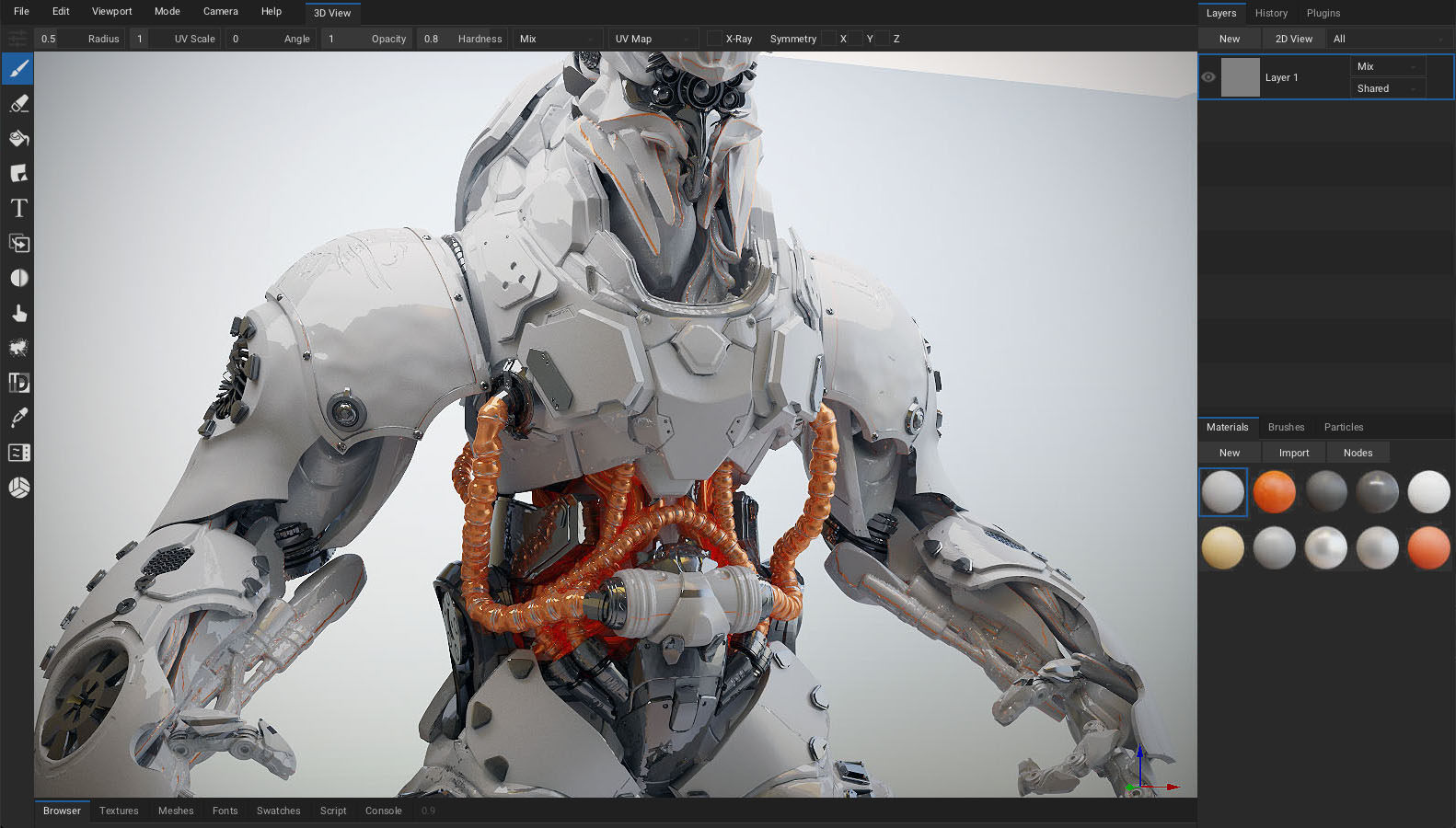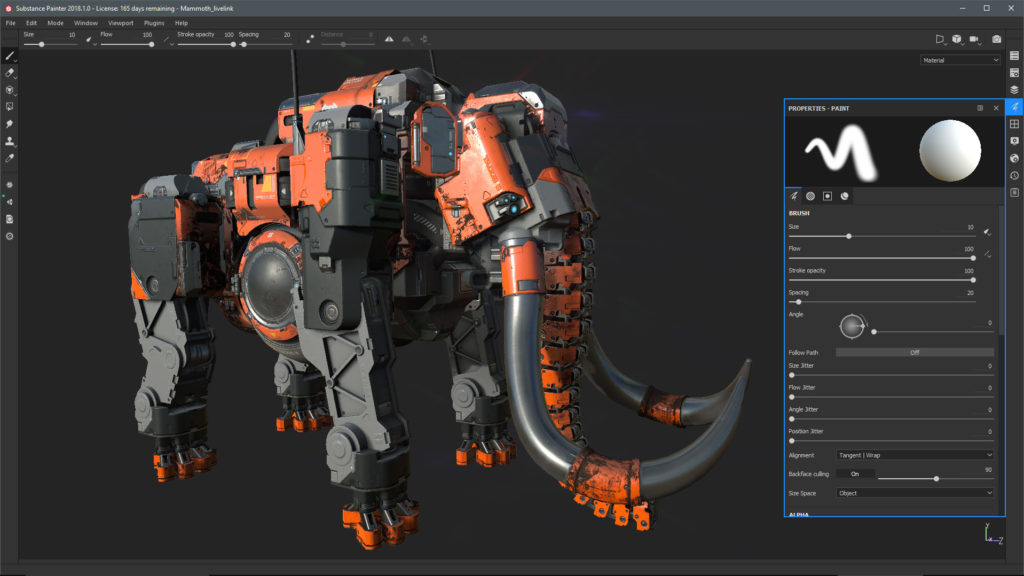

As you become more comfortable with the style give saturation a try to make areas pop more.

I would try using hue contrast for your flat colors, and value for the rest to start. With Hue, if you look at a color wheel, the colors opposite each other will give you more hue contrast. Two very different saturation values (greyscale vs color) will create contrast. But 'hue' and 'saturation' can also create contrast. (( note2: To keep things simple i only talked about 'value' for contrast.

Then work out what parts you can get rid of to help the shape read better to convey the material.)) If you are trying to figure out texture from scratch, try using very large brushes to paint the shape of the texture in a solid color. If it is more of a shape to to hint as the object's material, keep the contrast minimal and more solid/uniform for the whole shape. (( note: Texture follows the rule of 'form' where concave parts are darker, and convex parts are lighter if you are trying to build up depth. Give it a look if you are struggling for ideas. In many pixel art styles you can not make very complex definitions of texture (only so many pixels to work with) so artists make more abstract or simplified shapes to help define the texture. You can of course look at paintings for ideas, but another nice area to check out is pixel art. In this style a paint brush is a sloppy tool, you are not creating dense details for your texture, and the texture its self needs to be subtle to not make the values of the first two topics hard to read. This is the tricky one that requires some research. Volume is largely defined by lighting, so you can just bake some greyscale lights out, just adjust your lamps until you are happy with the composition and how visible shapes are. So if you just want some tips to give you frame work for form/volume(shading)/texture, here you go:įor form you can bake out a curvature map, in cycles you can use run through a to isolate the sharp concave/convex points of your model. The texture is also implied with ripples to make something more "sand" like, or cracks and dents to help something read like a rock. This i then blended with the "shading" that helps build up the form. Bricks have 6 sides, so edge wear with white for convex edges, and darker concave edges are implied with darker strokes.

When you do painterly work, the edges are defined by contrast, You are not seeing any clear edges, but instead implied edges, but where the implied edges are and what they represent is largely the same. You might then add shading to help further define the form in 3D, but largely the form is still understood before the shading. You might include extra edges to give it 'texture' (like scales on a fish). When you draw with say a pen, you create edges and these are primarily used to define your form (like general shape of a fish).


 0 kommentar(er)
0 kommentar(er)
